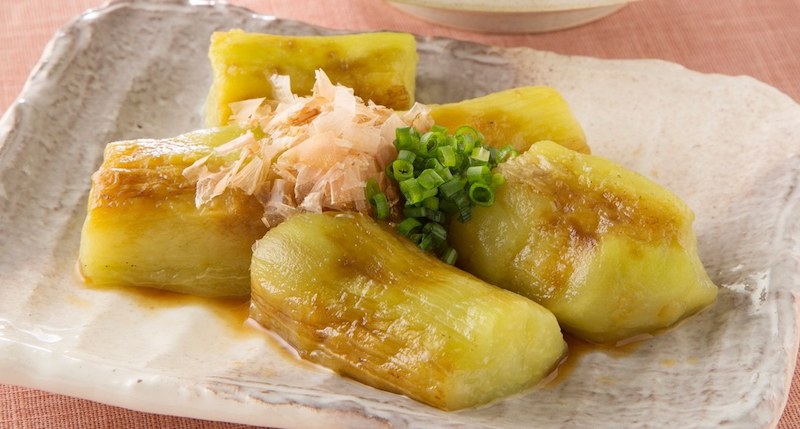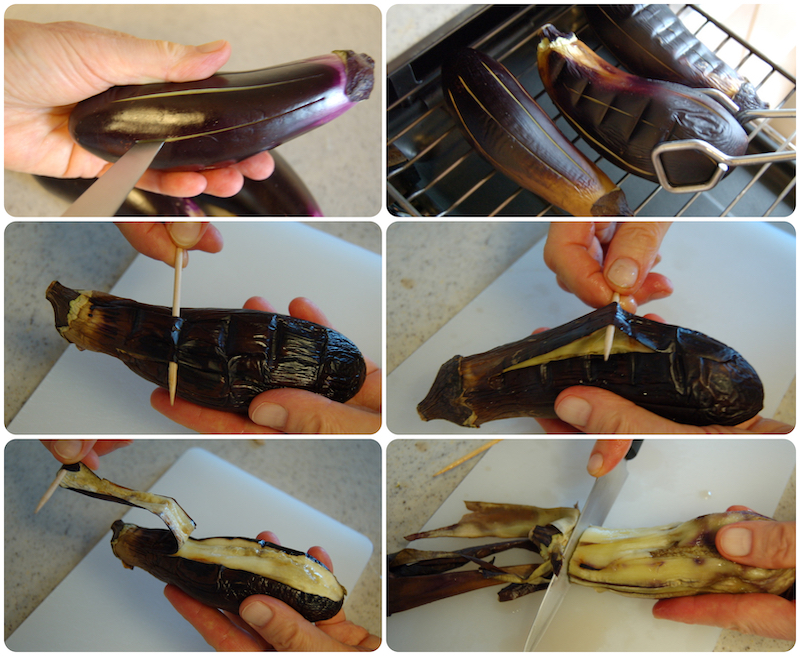
Roasted eggplant, peeled and drizzled with soy sauce, garnished with flakes of smoky katsuo-bushi and some minced scallions.
Throughout the summer months in Japan, plump and dark, tender-skinned eggplants can be found in every market and grocery store. As fall approaches, eggplant skins toughen a bit, and that is when roasted eggplant (yaki nasu) is especially good.
This dish can be served hot, peeled as it is taken from the grill, drizzled with soy sauce and garnished with grated ginger or other herbs or spices. Roasted eggplant is equally delicious served chilled after it has been allowed to cool in stock ohitashi-style. Once cooled, yaki nasu can be chilled for up to 24 hours.

Slitting, roasting and peeling eggplant.
Peel off the eggplants’ calyx (sepal). With the tip of a sharp knife, make 3 or 4 shallow, lengthwise slits in each eggplant. Place the eggplants under a broiler, or on a net to grill directly over a flame. Roast the eggplants using high heat, turning them occasionally, until tender; about 5 or 6 minutes (when pinched, they’ll yield easily). The skins will be slightly charred.
Remove the eggplants from the source of heat. When cool enough to handle, insert the tip of a toothpick or slender bamboo skewer just under the skin along the edge of one of the slits. Twirl the toothpick or skewer in place, then, beginning at the stem end, draw it through the length of the eggplant. Peel back the released skin and repeat this action several times until the skin has been completely released. Trim away the stem and peeled-back skin.
DOWNLOAD recipe for YAKI NASU




